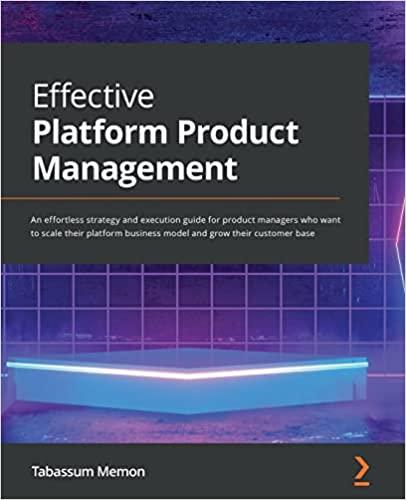Question
FORMATIVE ASSESSMENT 1 [100 MARKS] Read the case study below and answer ALL of the questions that follow CASE STUDY: The simple truth was that
FORMATIVE ASSESSMENT 1 [100 MARKS] Read the case study below and answer ALL of the questions that follow CASE STUDY: The simple truth was that Marty didn't like that Marty people. Adapted from Hartley, S. (2020): Project management: A practical guide to planning and managing projects, 4th Edition. The simple truth was that Marty didn't like that Marty people. Okay, so he was an introvertnot that that should have had any direct bearing on how he engaged his project stakeholders. After all, he could socialise, knew lots of people and generally felt comfortable contributing to the meetings he attended. With limited frontline experience, Marty was nominated for this project given his policy credentials and attention to detail. And as head of his state government policy unit, Marty certainly got things done. Of course with a stable team of only three, there was very little dissent as everyone seemed to get along just fine, which certainly created a productive working environment. As Marty prepared for his first stakeholder meeting, he knew exactly how he would engage with, manage and control this cohort of project stakeholders. Not only did he need to work with the government ministers, advisers, the governance committee, project board, different department heads across the state and industry bodies; he would also be dealing with senior managers, consultants, SMEs and junior staff from different departmentsin short, a dynamic mix of roles, egos, agendas and influence. Over dinner the previous night, his partner Ellen had tried to help by encouraging Marty to map out who this diverse pool of people wereto which Marty had tersely replied, 'I need to know a whole lot more than just who they are.' Realising that Marty had missed the point, Ellen politely suggested he try the following: Record who they are. Understand what role they play. Confirm their level of involvement. Identify the information they need. Develop a targeted communication strategy. Once Marty came to realise how his fear of engaging with these 'powerful' people could be broken down into just a couple of steps, he felt more at ease. All he needed was a couple of columns on a page where he could record the points Ellen had suggested. A quick Google search produced myriad designs for stakeholder management, communications management and stakeholder engagement. . . . much of the information would be gathered progressively throughout the project, given that some stakeholders came and went as the project progressed. With a little 'poetic licence', Marty created his own design and went to work filling in the blank columns and rows with what he knew about each stakeholder. It wasn't long before Marty knew that he actually didn't know a whole lot about the people at all. Sure, he could make something up or try to guess the information but he knew he was only kidding himself if he did that. But if he didn't have the necessary information to profile these people, what would he do? As he discussed this dilemma with Ellen, Marty realised that much of the information could be gathered by reviewing past project documentation (project plans, communication plans, risk registers, lessons learned logs) with which these stakeholders had been involved, accessing their position descriptions, direct interviews, informal conversations and/or as part of the initial and ongoing project meetings he had scheduled. After all, much of the information would be gathered progressively throughout the project, given that some stakeholders came and went as the project progressed. Source: https://www.perlego.com/group-register?orgt1=d8RKOLFhj548MHFcc3K/KQ QUESTION 1 (25 Marks) Project stakeholder management includes the processes required to identify the people, groups, or organisations that could impact or could be impacted by the project. Discuss in detail project stakeholder management. QUESTION 2 (25 Marks) Project communication is the process of communicating information from the person providing it to the person receiving it through vocal and nonverbal way. Analyse the project communication plan. QUESTION 3 (25 Marks) 3.1 Evaluate why simply identification of project stakeholders is not enough in order to ultimately engage, manage and control them. (15 marks) 3.2 Explain and identify the role of project artifacts in the above case study. (10 marks) QUESTION 4 (25 Marks) 4.1 The role of the stakeholder management in an organisation is important for increasing productivity and thereby increasing stakeholder flexibility. It will result in increased customer trustworthiness and obtain a strong reputation that will increase the competition between other organisations. Provide a detailed description of the role of Stakeholders in project success. (15 marks) 4.2 Project managers need to build and maintain relationships with various stakeholders. Identify and discuss the project stakeholders in the above project. (10 marks
Step by Step Solution
There are 3 Steps involved in it
Step: 1

Get Instant Access to Expert-Tailored Solutions
See step-by-step solutions with expert insights and AI powered tools for academic success
Step: 2

Step: 3

Ace Your Homework with AI
Get the answers you need in no time with our AI-driven, step-by-step assistance
Get Started


